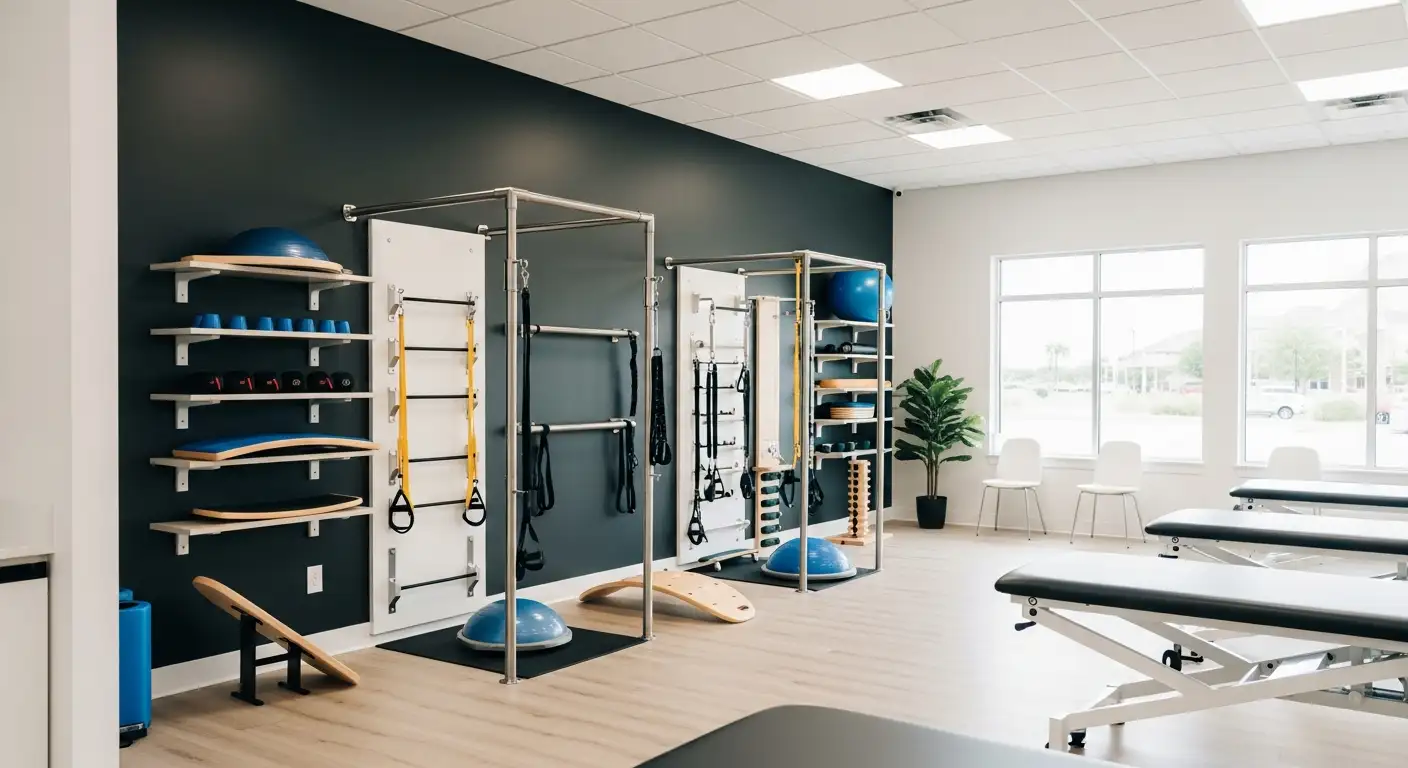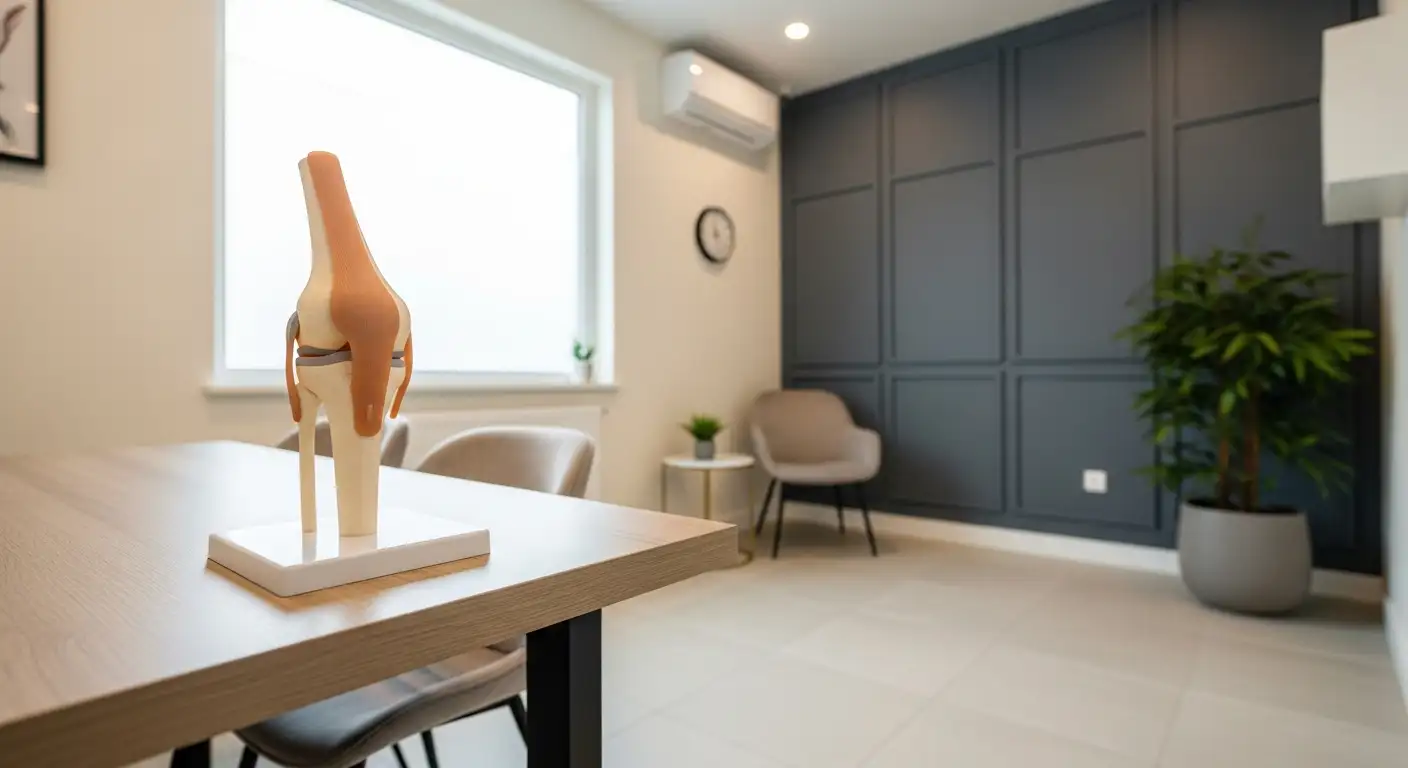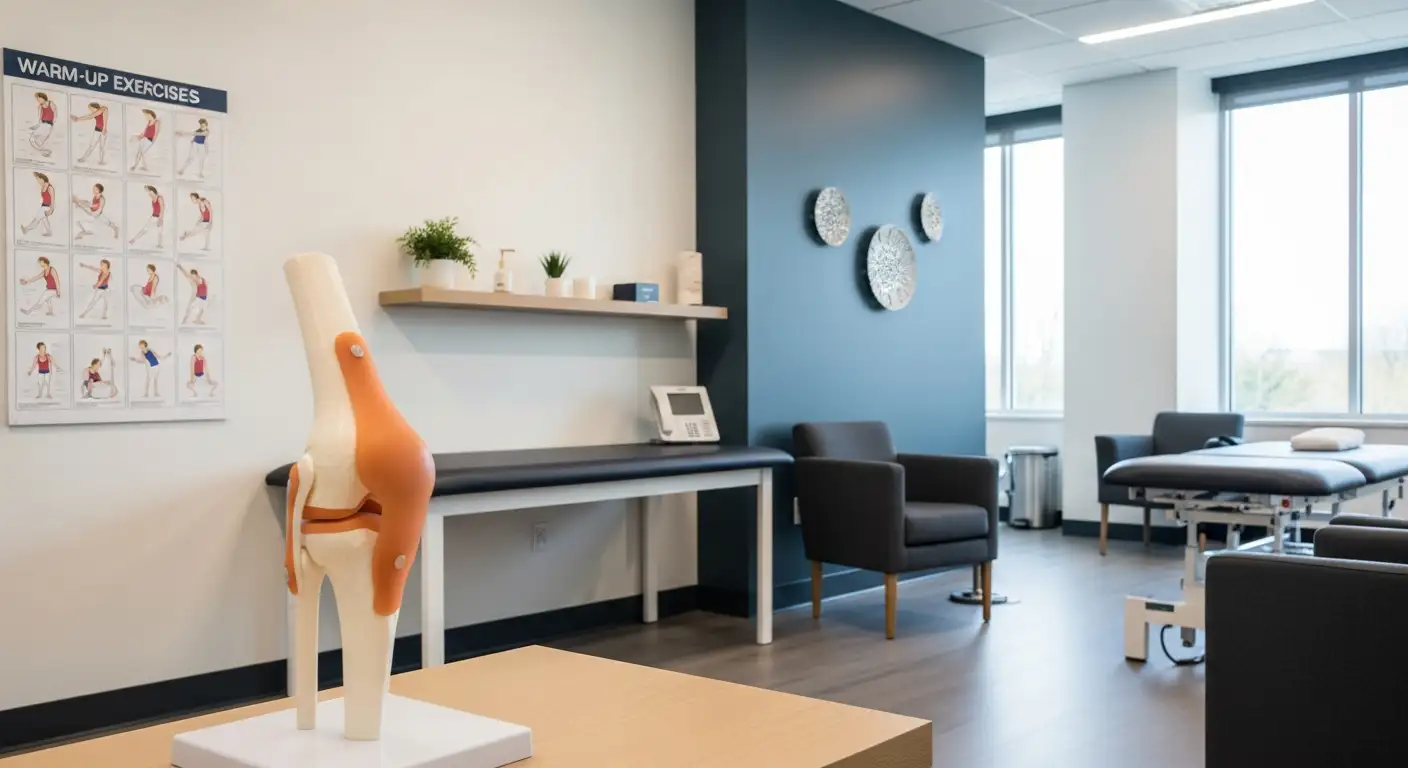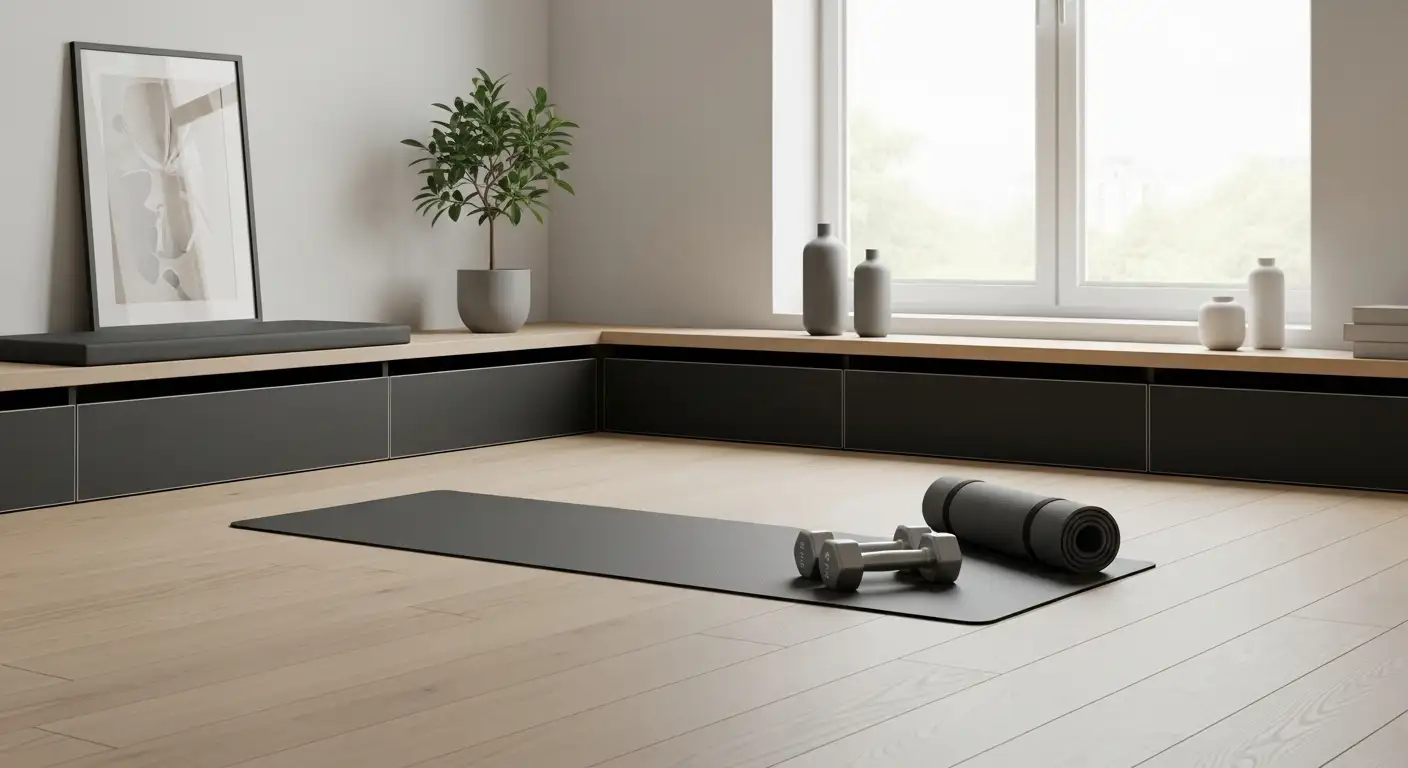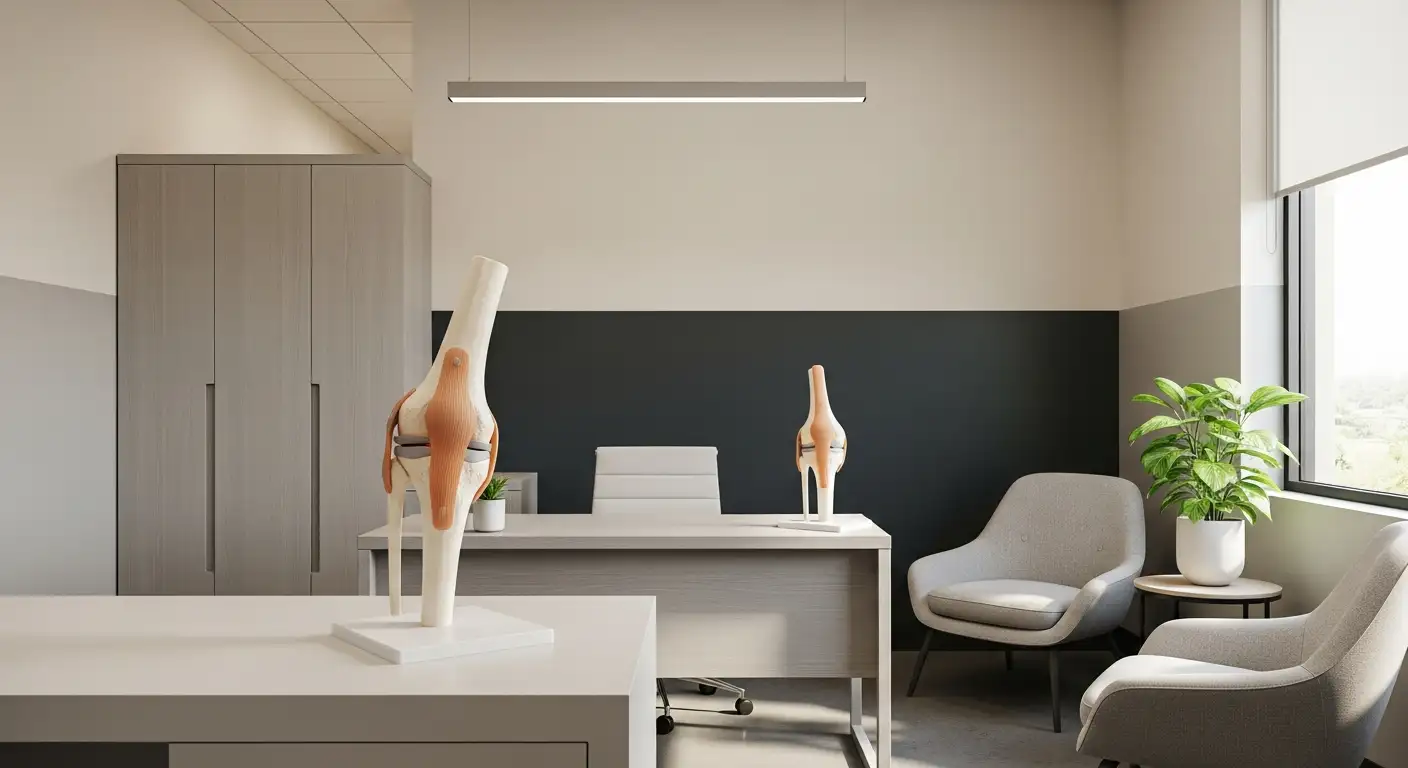Understanding Ankle and Knee Range of Motion
Definition of Range of Motion (ROM)
Range of Motion (ROM) refers to the extent to which a joint can move in various directions. It is measured in degrees, with each joint having its specific normative ranges. These values serve as a benchmark to assess an individual's flexibility and mobility. Understanding ROM is crucial for identifying impairments or limitations in joint function, which can affect daily activities and overall quality of life.

Importance of Ankle and Knee ROM
The ROM of the ankle and knee joints is particularly important for maintaining mobility and stability during movement. Ankle ROM norms within a healthy population are essential for understanding impairments, such as those found in individuals with conditions like plantar heel pain [1].
A well-functioning ankle allows for proper walking, running, and balancing, while knee ROM is vital for actions such as squatting, climbing, and sitting. Generally, accepted values for normal ROM indicate that the typical ankle dorsiflexion is around 20 degrees, while normal knee flexion is approximately 150 degrees.
Joint TypeNormal ROM (Degrees)Ankle Dorsiflexion20Knee Flexion150
Factors like age and sex also play a significant role in ROM. Research indicates that older adults generally exhibit a smaller ROM compared to younger individuals, with nearly a 45% difference noted in foot exercises [2]. Moreover, women tend to have greater ROM in certain joints compared to men. This understanding is integral for clinicians assessing and developing appropriate interventions for individuals experiencing limitations in joint movement. For further insights on knee anatomy, refer to our article on medial knee anatomy.
Factors Affecting ROM
Range of motion (ROM) is influenced by several factors, including age, gender, and the practice of stretching. Understanding these variables helps to explain the variations in ROM among individuals.
Age and ROM
Age significantly impacts the range of motion in various joints, including the ankle. Research indicates that older adults experience a reduction in ROM compared to younger individuals. Specifically, there can be nearly a 45% difference in ROM between younger and older participants during foot exercises.
Age GroupEstimated ROM Difference (%)Younger (20s)100%Older (60s and above)55%
Gender Differences in ROM
Gender also plays a crucial role in determining the range of motion. Studies have shown that women generally possess a greater range of motion than men. For instance, women exhibit nearly 30% more ROM in their hands than their male counterparts during assessments of eight different joints.
GenderEstimated ROM Difference (%)Female130%Male100%
Effect of Stretching on ROM
Stretching is another important factor that can enhance range of motion. A study focused on a group of individuals in their early 20s demonstrated that stretching not only helped reduce muscle stiffness but also resulted in a measurable increase in ROM, particularly among women.
Static stretching, wherein individuals hold a muscle in a stretched position for about 15 to 20 seconds, is particularly effective for improving joint ROM. Moreover, applying heat to the targeted muscle during stretching may further enhance results [2].
Overall, age, gender, and flexibility training through stretching are key factors that influence the ankle ROM norms and the overall mobility of individuals. For more guidance on knee health, including understanding related conditions, explore topics like quad tendonitis and popliteus tendon.
Normal ROM Values
Understanding the normal range of motion (ROM) values for the ankle and knee is essential for identifying potential movement restrictions. This section provides an overview of the ankle dorsiflexion norms and knee flexion standards.
Ankle Dorsiflexion Norms
Ankle dorsiflexion refers to the movement that brings the toes toward the shin. The general range of motion for ankle dorsiflexion is approximately 20 degrees. However, reported normal values can vary between 0°-16.5° and 0°-25°, depending on the literature and whether the assessment is conducted in a weightbearing position Verywell Health Physiopedia.
Ankle Dorsiflexion MeasurementNormal RangeWeightbearing0° - 25°Non-weightbearing20° (general norm)
Limited ankle dorsiflexion can result from tightness in muscles such as the soleus and gastrocnemius, or from abnormal osseous formations. Such limitations may hinder the ability to perform vital movements like squatting and lunging due to their effects on knee flexion and extension NCBI.
Knee Flexion Standards
Knee flexion refers to the bending of the knee, allowing for movements such as sitting down and squatting. Normal knee flexion values typically reach up to 135 degrees in healthy individuals. This standard is important for determining functionality and mobility.
Knee Flexion MeasurementNormal RangeMaximum FlexionUp to 135°
Assessing these knee flexion norms is crucial for understanding how well an individual can perform everyday activities. Limitations in knee flexion can indicate underlying issues that may require further examination.
For individuals experiencing knee pain and wanting to understand more about their condition, considering aspects like lateral patellar tilt and quadrants like the infrapatellar bursa may be beneficial. Recognizing these norms can assist in evaluating function and planning rehabilitation strategies for knee-related issues.
Impact of Limited ROM
Restricted range of motion (ROM) can have significant implications for overall joint health and functionality. Understanding the causes and consequences of limited ROM is crucial for both prevention and treatment.
Causes of Restricted ROM
Limited ROM can result from various factors affecting the joints. Common causes include:
Consequences of Limited ROM
The effects of restricted ROM can be significant, impacting daily activities and overall quality of life. Key consequences include:
Recognizing these causes and consequences is essential for establishing effective treatment strategies and improving overall joint health. For those interested in specific rehabilitation methods, resources on helpful exercises to improve ROM and techniques can provide valuable guidance.
Clinical Relevance and Applications
Understanding ankle ROM norms is essential for various activities and is particularly significant in the context of squat depth and injury prevention.
ROM in Squat Depth
Squat depth is influenced by several factors, notably ankle dorsiflexion. Research indicates that ankle dorsiflexion with a flexed knee and the hip flexion range of motion are significantly correlated with squat depth in male subjects (R² = 0.435). For females, the association between ankle dorsiflexion with an extended knee and dorsiflexor strength is similarly significant (R² = 0.324) [3]. Deep squatting is essential for ground activities and overall muscle strength in the lower extremities. Inadequate ankle mobility may lead to compromised squat mechanics and reduced performance.
FactorMale SubjectsFemale SubjectsDorsiflexion with Flexed KneeR² = 0.435N/ADorsiflexion with Extended KneeN/AR² = 0.324
Ankle dorsiflexion mobility is crucial in developing effective treatment plans and preventing abnormal movement patterns during squatting. Thus, proper assessment of the ankle's range of motion can guide exercise prescriptions and rehabilitation protocols.
Implications for Injury Prevention
Limited range of motion, particularly in the ankle, can contribute to injury risks. Research suggests that improving dorsiflexion and plantar-flexor extensibility may play a role in decreasing the risk of anterior cruciate ligament (ACL) injuries. Such improvements influence the positioning of the lower extremity during activities like squatting, thereby reducing the loading exerted on the ACL.
Furthermore, ankle joint mobility may also be affected by other factors such as age and diabetes duration, which can impact both functionality and injury risk. Regular assessment of ankle ROM norms can help identify individuals who may benefit from targeted interventions aimed at enhancing mobility and thereby preventing injuries.
To enhance ankle mobility and improve overall functional performance, individuals may consider implementing specific exercises and stretching routines into their regular fitness regimen. For additional guidance on knee-related concerns, individuals may refer to resources on quad tendonitis or lateral patellar tilt.
Addressing Limited ROM
Limited range of motion (ROM) can significantly affect mobility and day-to-day activities. Addressing this issue through targeted exercises and rehabilitation strategies is essential for improving overall joint function, especially in the ankle.
Exercises to Improve ROM
Several exercises can help enhance ankle dorsiflexion and overall range of motion. Incorporating these movements into a regular routine can promote flexibility and strength.
Exercise NameDescriptionFrequencyAnkle Dorsiflexion StretchSit on the floor with your legs extended. Pull your toes towards you while keeping your knees straight. Hold for 15-30 seconds.3 times per dayWall Calf StretchStand facing a wall, place one foot back, and press the heel down while bending the front knee. Hold for 15-30 seconds.3 times per dayHeel RaisesStand tall and slowly raise your heels off the ground, balancing on your toes. Lower back down.10-15 reps, 2-3 times a weekResistance Band DorsiflexionSecure a resistance band around a sturdy object and loop it around your foot. Pull your toes back towards you against the band's resistance.10-15 reps, 2-3 times a week
Research shows that rehabilitation programs incorporating exercises to improve ankle dorsiflexion have been effective in enhancing squat depth and lower extremity muscle strength. Properly designed exercise programs also address limited dorsiflexion, which can restrict squatting and lunging movements.
Rehabilitation Strategies
In addition to exercises, comprehensive rehabilitation strategies should focus on improving both ankle and foot range of motion. Here are some approaches that can be integrated into a rehabilitation program:
Focusing on ankle dorsiflexion mobility is crucial for optimizing squat depth and muscle function, as well as preventing faulty movement patterns during exercises. Additionally, strategies that promote increased plantar flexor extensibility can mitigate the risk of ACL injuries by positioning the lower extremity in ways that reduce overall loading on the joint.
Implementing these exercises and rehabilitation strategies will promote better range of motion, ultimately enhancing performance and reducing the risk of injury associated with limited mobility. For further information regarding knee conditions, refer to articles on medial knee anatomy and quad tendonitis.
References
[2]:
[3]:
[4]:
[5]:
[6]:
[7]:
